Ethereum Price Prediction 2024 – 2030
Ethereum Price Prediction 2024 – 2030
Share
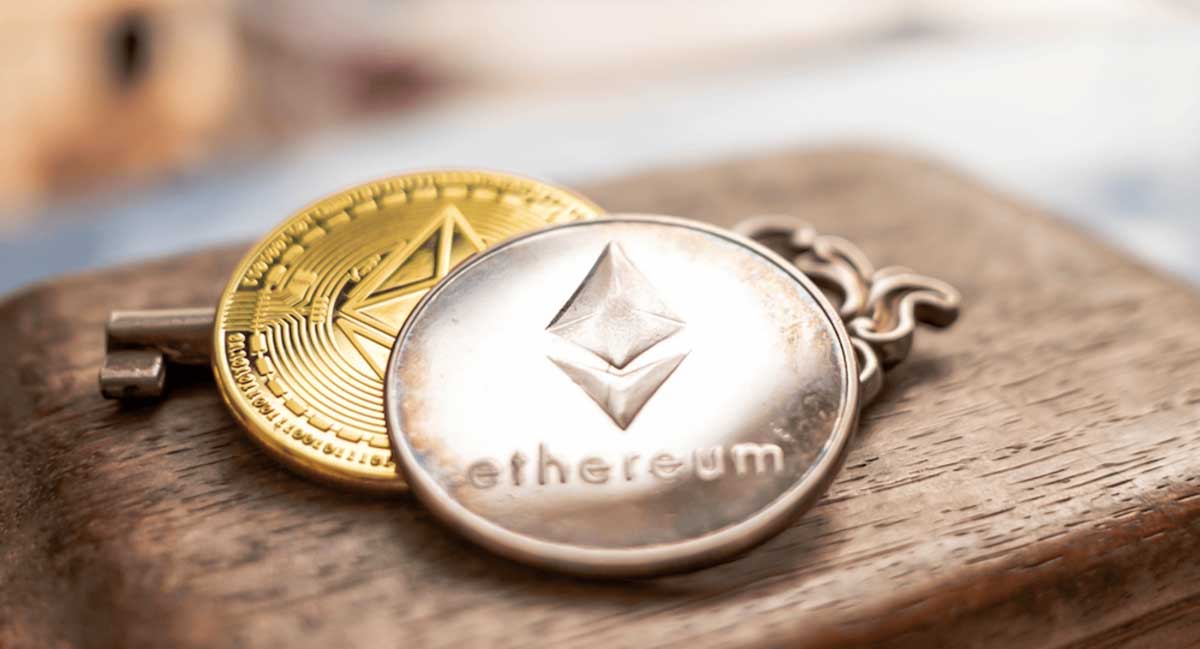 Ethereum is the world’s #2 cryptocurrency (by market cap) and the world’s most popular smart contracting platform. It was designed to operate as a world computer and has overcome many hurdles in its short, 8 year existence—some self-induced, others put there by those threatening to stifle innovation.
Ethereum is the world’s #2 cryptocurrency (by market cap) and the world’s most popular smart contracting platform. It was designed to operate as a world computer and has overcome many hurdles in its short, 8 year existence—some self-induced, others put there by those threatening to stifle innovation.
In this Ethereum price prediction, we dive into what Ethereum is aiming to accomplish through its development roadmap, what has happened to it in the past, and how all this has, and will, affect Ethereum’s price in the future. We’ll also look at the myriad of factors that affect the Ethereum price.
What lies ahead for Ethereum and the ETH price at this crucial moment in Ethereum’s history?
Ethereum Price Prediction Overview
- The Ethereum network was launched in 2015, and ETH’s first registered price is $1.2222
- Through 2017 Ethereum gained an astounding 17,970.6%, rising from $8.10 to peak at $1,463.72
- Ethereum lost value after The Merge, the biggest network upgrade in its history.
- We predict that Ethereum will get its first 5 figure all-time high (ATH) of $10,200 in 2029, as a result of the Bitcoin Halving Event
- Bitcoin, regulators, the global economic picture, network upgrades, and institutional usage rates are all factors impacting the price of Ethereum
- Ethereum’s roadmap lays out how it is going to scale to 100,000 transactions per second and onboard thousands of users—we discuss how these upgrades will affect the price of ETH
Historical Evolution of Ethereum
The idea for Ethereum was first conceived in 2013 by a young programmer, Vitalik Buterin, after his father introduced him to Bitcoin. Vitalik authored the initial Ethereum whitepaper, outlining the idea that blockchain technology could be used for more than just the transfer of value—as Bitcoin is.
More specifically, Vitalik proposed that blockchain technology could be used to host contracts (what we today call “smart contracts”) that could perform a whole host of functions and that the distributed network could function as a world computer.
Ethereum’s Beginnings
In 2014, Vitalik took his idea to the North American Bitcoin Conference, in Miami, where he outlined his vision in a 25 minute speech. After this address, Vitalik and a few others from the conference, now considered the cofounders of Ethereum, who were excited by the idea, rented a house to work on the idea.
One of these individuals, Gavin Wood (creator of Polkadot), then wrote the Ethereum Yellow Paper, which defines the Ethereum Virtual Machine (EVM)—the operating environment that makes smart contract execution possible.
In the summer of 2014, the Ethereum Foundation was created, as a non-profit to oversee the development of Ethereum. Funds for this development were raised through a crowdsale—which was one of the first initial coin offerings (ICOs)—where Ethereum tokens were sold for Bitcoin—raising more than $18 million.
Over the next 18 months, the initial Ethereum protocol was developed, multiple testnets were run and the network was officially launched on July 30th, 2015, with the creation of the Ethereum genesis block.
Like Bitcoin, Ethereum was initially a proof-of-work network. Unlike Bitcoin, Ethereum had an uncapped supply, which made it an inflationary asset.
The DAO Hack and DAO Hard Fork Controversy
An important part of Ethereum’s history is often glossed over as it is considered a stain on the world’s #2 cryptocurrency’s reputation.
In 2016 a group, containing many members of the Ethereum Foundation, proposed a project simply called The DAO. The DAO’s goal was to become a crowdfunded venture capital firm to invest in new projects building on Ethereum.
The DAO had initial success, raising $150 million—14% of the total supply of Ethereum at the time—in its own crowdsale.
However, after the crowdsale had concluded, a bug was found in the DAO’s smart contract that allowed someone to drain funds from the contract. A hacker noticed it first and made away with 30% of all the raised funds before well-intentioned hackers stepped in to secure the other 70%.
To solve the problem of stolen funds a soft fork was proposed and implemented on the network. However, a bug was quickly found in the soft fork and the miners rejected it, forcing the need for another solution.
A hardfork was proposed which, controversially, would return all the funds from the hacker’s account to The DAO. A short, and also controversial, vote was held to authorize the fork, which was subsequently implemented 5 days later.
Prior to this incident, the mantra “code is law” was one of Ethereum’s calling cards, meaning that whatever happens on the blockchain cannot be changed—regardless of its origin. There are those who vehemently disagreed with the idea of the hard fork on these grounds, and its implementation can be seen as an evolution in the network’s principles.
The Birth of a Classic (Ethereum Classic)
After the hardfork was implemented it was thought that just one chain would exist, and the unchanged chain would disappear. However, some miners continued to support the original chain. Two exchanges gave this chain price discovery and rebranded it to Ethereum Classic, which is still its name today.
The DAO hack and subsequent infighting is a long story with many twists and turns. If you want to know more, this post tells the in-depth story of the DAO hack and subsequent community divisions, and this timeline offers a chronological overview of events.
Hardforks and Network Evolution
The DAO fork was not the first or last hard fork on the Ethereum blockchain, as hard forks are how the Ethereum protocol is upgraded. There have been multiple in Ethereum’s history, some of which are more consequential in the history of Ethereum than others, these we’ve summarized in the table below:
Hardfork NameDateMost Significant ImpactByzantiumOctober 2017Allowed for the creation of layer 2s to scale the networkConstantinopleFebruary 2019Initial setup for move to proof-of-stake (PoS)IstanbulDecember 2019Improved layer 2 and smart contract functionalityBeacon ChainDecember 2020The initial deployment of the PoS chain for EthereumLondonAugust 2021Introduction of fee burning mechanism reducing the inflation rate and increasing the chance of ETH being deflationaryBellatrixSeptember 6th 2022Second upgrade to the Beacon chain, preparing it for The Merge“Paris
(The Merge)”September 15th 2022Proof-of-work (PoW) was switched off, PoS was switched on, completing The Merge and Ethereum’s switch to proof-of-stake consensus
As said, this isn’t a complete list, and each hardfork introduced more than just the significant impact we’ve stated here. Those looking for a deeper dive into each hardfork and the technical evolution of the Ethereum blockchain can read this complete history of Ethereum hardforks.
CryptoPunks, CryptoKitties, and NFTs
Here it is worth noting another important step in the evolution of Ethereum and the cryptocurrency world, NFTs.
In 2017 a revolution started on Ethereum with the launch of CryptoPunks. CryptoPunks were one of the earliest examples of NFTs on Ethereum, and have continued to remain relevant; the current lowest price for a CryptoPunk is just under 60 ETH, around $150,000. This collection of 10,000 algorithmically generated pixel characters were not actually NFTs, but they did help to spur the creation and implementation of the ERC-721 NFT standard on Ethereum.
Later on in 2017, the cats began to take over Ethereum, with the rise in popularity of the CryptoKitties game. In this game, users take NFT kittens and breed them together to create new, unique kittens that draw on the traits of their parents. This game grew so popular that it took up 20% of Ethereum’s computation and drastically increased transaction costs. This hastened the need for scaling solutions, because who’s going to want to use a network that can be put out of action by a viral cat game?
Ethereum, The Merge, and Proof-of-Stake
The Merge was an event almost 5 years in the making, and it was the talking point of the cryptocurrency ecosystem for a long time before, and even after, it happened. Ethereum cofounder, Joe Lubin, said to Time that the Merge “may end up being more significant” than the genesis day.
The Merge combined the existing Ethereum PoW blockchain with the PoS Beacon chain that had been running alongside it since December 2020. This merging of the two chains meant that the Ethereum network didn’t lose any of its history as it switched from PoW to PoS—all without affecting the users at all.
There are several reasons Ethereum switched to a POS consensus model:
Reduced Energy Consumption: Ethereum’s energy consumption was reduced by over 99% after the switch to proof-of-stake, and some even stated that “the merge will reduce worldwide electricity consumption by 0.2%”. This was all coming at a time when passions around climate change were high and the power consumption of blockchains was one of the pieces of vitriol being thrown at them.
Deflationary Potential: Prior to The Merge around 13,000 ETH was issued per day. With the switch to PoS this shrank to around 1,700 ETH per day—significantly reducing ETH inflation.
The London hardfork also introduced a burning mechanism that removes the minimum fee attached to each transaction from circulation. If a single day has an average gas price of more than 16 gwei then the burned amount of ETH exceeds the issuance limit and results in deflation of ETH in that day.
Staking Interest: Ethereum users can now stake their ETH to help secure the network and earn interest (in newly issued ETH) for doing so. A user requires a minimum of 32 ETH to operate a validator and earn this reward.
Lower Barrier to Entry: Mining is an expensive operation that requires massive amounts of energy, limiting the number of people with the resources and capacity to secure the network. Staking made it easier for more people to participate in securing the network, making it more decentralized in the process. However, at current prices, a user needs over $83,000 worth of ETH to run a validator node.
New Scaling Possibilities: Moving to a PoS consensus mechanism allows for future scalability upgrades that are not possible when using a PoW consensus mechanism. This allows Ethereum to scale to meet the needs of a global, digital society.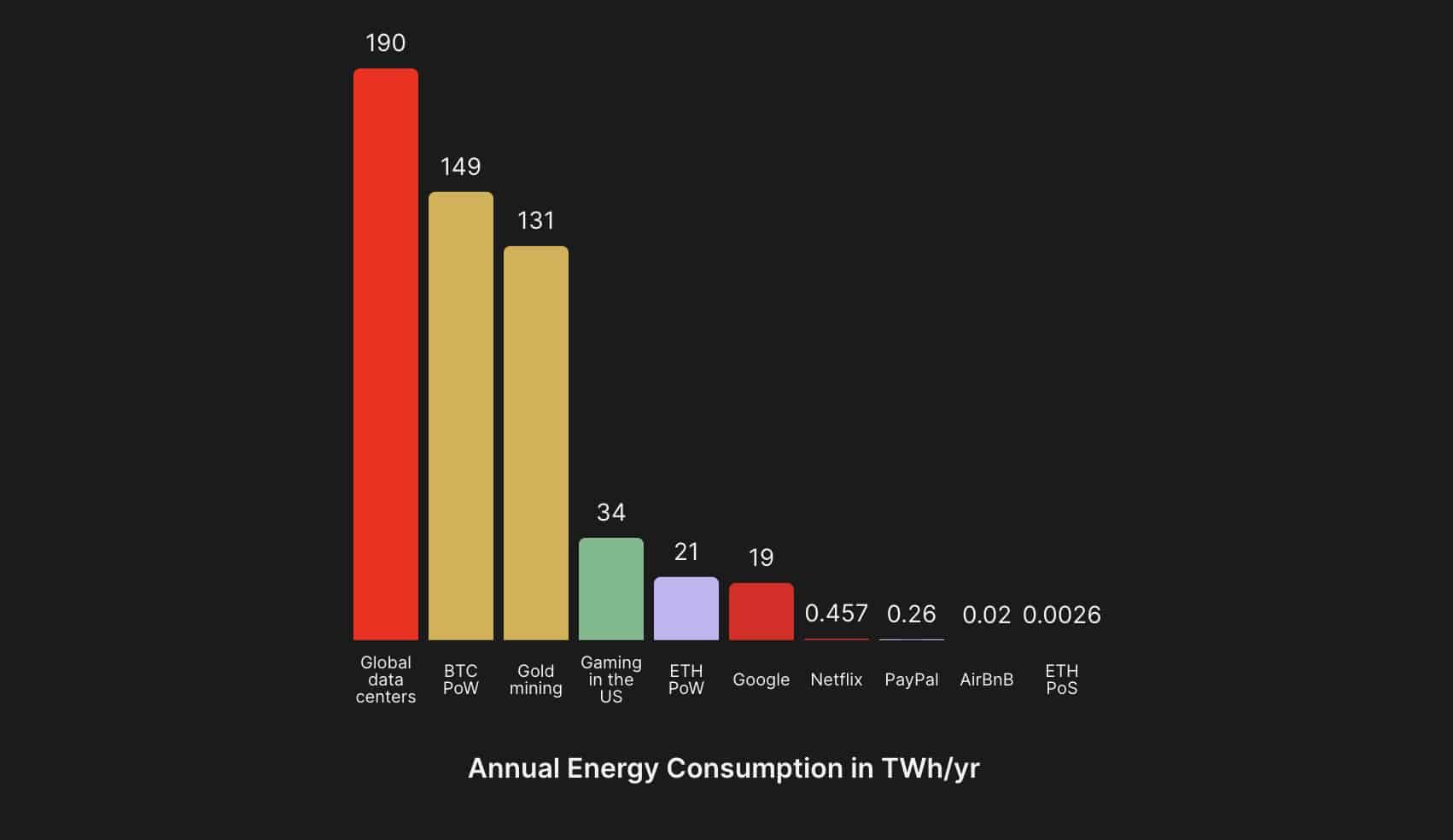
Current State of Ethereum
Ethereum is a fully functioning, decentralized proof-of-stake blockchain that works as a global computer where people can interact and transact in a permissionless manner, from anywhere in the world. It is used by individuals and enterprises for a wide variety of functions, from transferring value to taking out loans to storing data in an immutable fashion.
The Ethereum ecosystem contains many of the world’s most popular dApps and some of the biggest technological transformations to come from the cryptocurrency movement, including NFTs, DeFi, zero-knowledge privacy solutions, and layer 2 scaling networks. Here’s a quick look at the Ethereum blockchain in numbers:
- Over 4,400 dApps, #2 overall (DappRader)
- Over 5,000 developers working in the Ethereum ecosystem, #1 overall (DeveloperReport)
- Over 65 million smart contracts on-chain (Dune)
- $38.74 billion in DeFi TVL, #1 overall with 56% of total TVL (DeFiLlama)
- Over $42 billion in NFT sales volume, #1 overall (CryptoSlam)
- 25% of all ETH is currently staked by validators
Alongside these stats, the Ethereum network processed an average of more than 1 million transactions per day over the past year, a number that is only expected to grow as the number of unique addresses and daily active addresses continue to increase.
While these numbers are impressive there are also more than 8 layer 2 networks posting their transactions to Ethereum and taking the load off the main chain, and many more in the pipeline to be launched—meaning the number of transactions secured by the Ethereum layer 1 is much higher.
Recently there has also been the launch of an application-specific (for gaming) layer 3 on top of the Arbitrum layer 2.
Market Position and Performance
Ethereum is sat at #2 on CoinMarketCap’s ranking of coins by market cap, as it has been since 2016. In the same article linked above, it is also pointed out that Ethereum is the third best performing asset in the CoinMarketCap top 100 since 2013, with a more than 700x increase.
In the past year, the price of Ethereum has seen an over 75% increase in price, from $1,418 on January 12th, 2023, to $2,506 on January 12th, 2024. The total supply of available ETH has also been slowly decreasing since the introduction of The Merge in September 2022 making Ethereum a deflationary asset, a move that Vitalik said was giving Ethereum “legitimacy” as “ultra sound money”. Overall, Ethereum’s recent performance has been strong through the Crypto Winter of 2022–2023. Its market dominance of 17–19%, also held strong through the Bitcoin ETF speculation-fueled price rises in early 2024. However, the early 2024 surge of Solana, which has now reentered the top 5, has eaten into Ethereum’s dominance, bringing it down to a still-strong 16.8%.
Overall, Ethereum’s recent performance has been strong through the Crypto Winter of 2022–2023. Its market dominance of 17–19%, also held strong through the Bitcoin ETF speculation-fueled price rises in early 2024. However, the early 2024 surge of Solana, which has now reentered the top 5, has eaten into Ethereum’s dominance, bringing it down to a still-strong 16.8%.
Finally, before we dive into our Ethereum price prediction, Ethereum is the only cryptocurrency that is currently available to institutional investors as a futures contract, approved in October 2023 by the SEC. It is also seen as the next candidate for ETF approval, reflected in the markets the day after Bitcoin ETF approval with a 9% ETH price pump. There are already 7 Ethereum ETF applications registered with the SEC, with the first approval deadline set for May 23rd, 2024, and a Bloomberg analyst giving them a 70% chance of being approved.
Ethereum Price Predictions 2024-2050
Here we take a look at what is in store for the Ethereum network in each of the coming years, along with the impact it could have on the price of Ethereum, and we make an Ethereum price prediction for each year.
ETH Price Prediction for 2024
2024 is shaping up to be an exciting year for the world of cryptocurrencies, especially Ethereum.
Looking at the technical indicators on the weekly chart for Ethereum, we find that the 50-day simple moving average (SMA) is toying with the 200-day SMA after coming down to touch in Q2 of 2023. The last time this happened was in late 2020, when a “golden cross” movement had ETH make the move upward to make those ATHs 12 months later. If the current rally is sustained, we could have the same scenario on our hands.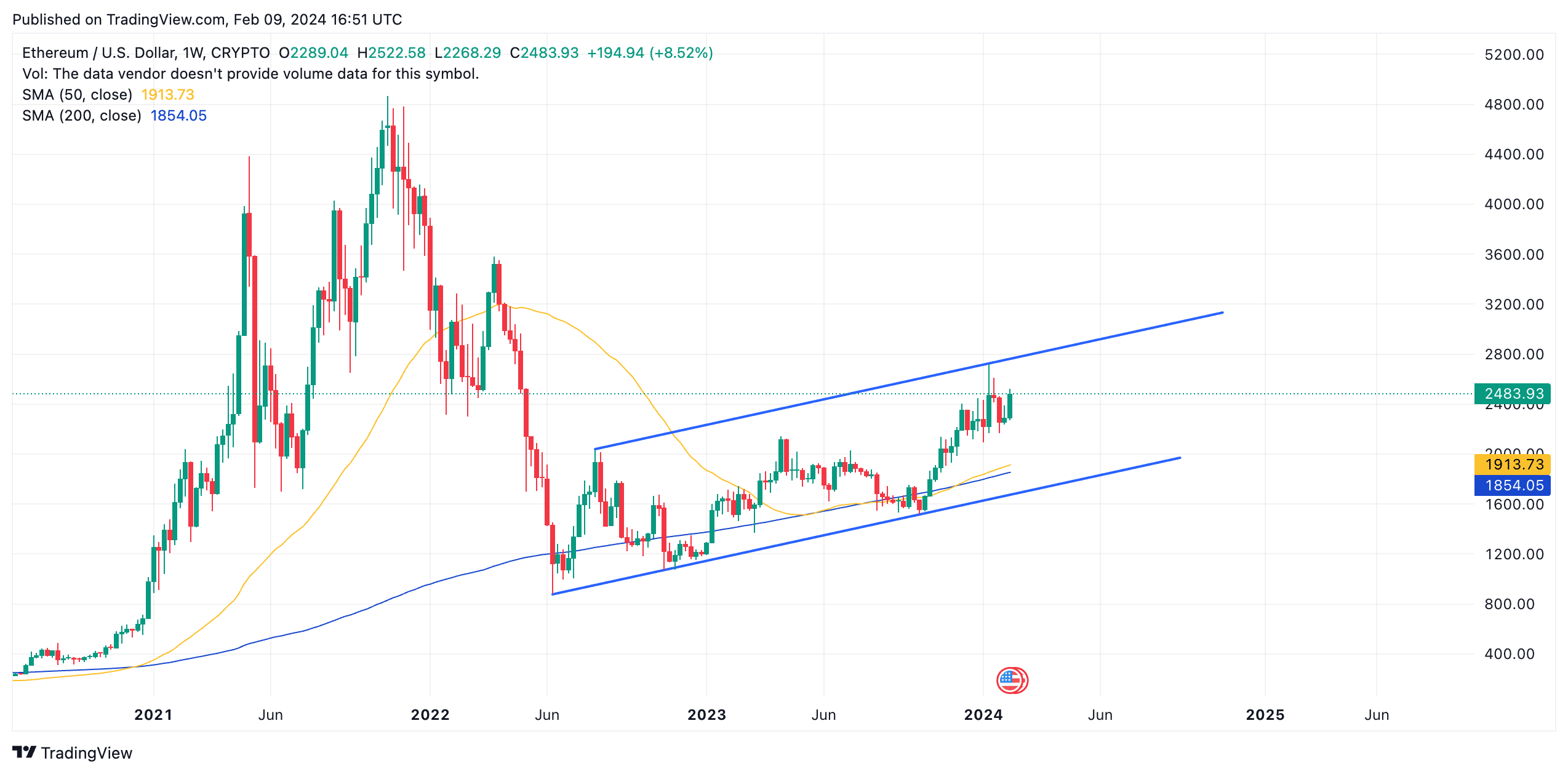 Many things could help to spur this move onward, not just market sentiment built on indicators. These other factors include the upcoming deadline for Ethereum ETF approval in May, increasing investor confidence throughout the year as the Fed cuts interest rates, and the release of the Dencun upgrade for the network, targeted for March 13th, that will make Ethereum more secure and faster.
Many things could help to spur this move onward, not just market sentiment built on indicators. These other factors include the upcoming deadline for Ethereum ETF approval in May, increasing investor confidence throughout the year as the Fed cuts interest rates, and the release of the Dencun upgrade for the network, targeted for March 13th, that will make Ethereum more secure and faster.
All-in-all, our Ethereum price prediction 2024 is a low of $1,800, a high of $3,800, and a median price of $3,000.
ETH Price Prediction for 2025
It is widely predicted that the cryptocurrency narrative in 2025 will be dominated by the effects of the 2024 Bitcoin Halving event. These Halving events typically induce new ATHs for Bitcoin and many altcoins 12–18 months after they’ve occurred, meaning that these gains are expected to arrive in 2025.
As a result, our ETH price prediction 2025 is a new ATH high of $6,600, a low of $2,800, and an average price of $3,200.
ETH Price Prediction for 2026
If the expected narrative is correct, and we feel the positive price effects of the 2024 Bitcoin Halving in 2025, then 2026 is when we’ll be coming down off these highs.
However, with Crypto prices prominent in the news last year thanks to new ATHs, we can expect governments around the world to be well on the way to implementing cryptocurrency regulations. So long as these are positive and foster the continued evolution of crypto, which we expect them to and be and do, then we can expect the bleeding to be somewhat stopped by these positive developments.
Add to this the fact that scaling developments should be implemented onto the Ethereum network by this point, greatly increasing its utility, and we are mutedly bullish for Ethereum in 2026, with no new ATH predictions but sustained highs of $5,800, lows of $3,500, and an average price of $4,500.
ETH Price Prediction for 2027
Not every year is going to be as exciting as the others, and 2027 might be that year for Ethereum. Many big regulatory moves have already been made, no Halving events are affecting the price, and the global economy should be chugging along nicely after everything has settled from the recession scares of 2022 and 2023.
Institutional use of the Ethereum protocol will hopefully continue to grow into 2027, increasing demand for ETH. However, this demand will be countered by technical improvements that make ETH cheaper and easier to use.
As a result, we may find that prices have contracted into a smaller range for 2027, with highs of $5,200, lows of $3,900, and an average price of $4,400
ETH Price Prediction for 2028
2028 will be the year of the 5th Bitcoin Halving event, and with cryptocurrencies now mainstream and, with investors knowledgeable of the Bitcoin Halving cycle and the expected increase in cryptocurrency prices, we can expect rises in the price of Ethereum based on investors speculation. However, will the Ethereum and Bitcoin prices have decoupled by this point? It is unlikely, and ETH will still be at BTC’s mercy.
This is why we predict highs of $6,300—close to the ATHs set in 2025 as no one wants to buy higher than this just yet. We also predict lows of $4,200, and a high median price of $5,800.
ETH Price Prediction for 2029
In 2029 we can expect most of Ethereum’s planned upgrades to either be complete or very close to implementation. Here we’re likely to see growing institutional and public use of the network for all sorts of business and personal use cases that greatly impact the way we conduct commerce and value transfer.
On top of this, while everyone thought the Bitcoin Halving event was priced in, prices continue to climb and Ethereum, if it retains the title of the most used and most popular smart contracting platform in the world, could see its first 5 figure ATH of $10,200, a low of $7,100, and an average price of $8,800.
ETH Price Prediction for 2030
If Ethereum has retained its place as the top altcoin then we could see it decouple from the Bitcoin price, and the fallout from the Bitcoin Halving event, if it does hit the crypto market at all, will hardly impact the Ethereum price, helping to bring greater price stability to ETH.
We should also be in, or close to, the Splurge section of the Ethereum roadmap, where developers are tidying up the existing code and fine-tuning the Ethereum protocol. It is also highly likely that new ideas will be under development by this point, and may even be close to implementation—with the possibility of taking blockchain technology and cryptocurrencies to new heights.
With all that said, 2030 could bring much more stability to the Ethereum price with people looking to the future for it to be a major part of society. This is why we’re predicting a much tighter range, with highs of $9,600, lows of $8,800, and an average price of $9,000
Factors Influencing Ethereum’s Price
There are numerous items that affect the price of Ethereum. The most important of those have been detailed here.
Bitcoin: Arguably the biggest influence on any altcoin is the price of Bitcoin and the happenings on the Bitcoin network. The price action of Ethereum, just like any other altcoin, is closely tied to that of the world’s #1 cryptocurrency.
Here we must also mention the Bitcoin Halving, which has historically driven Bitcoin and all altcoins to new ATHs 12–18 months after the event occurs. The next Bitcoin Halving event is due to happen in April of 2024 and investors will be watching it closely.
Regulator’s Definition of Ethereum: In June of 2023, the SEC separately sued both Coinbase and Binance, labeling Ethereum as a security in both lawsuits (prompting large drops in the price of Ethereum). The New York General Attorney also called Ethereum a security in 2023, in a lawsuit against the KuCoin exchange.
Until these regulators remove this label, the presumption that ETH is a security will keep downward pressure on the price. However, when, or if, this is cleared up, we could likely see the price of Ethereum skyrocket.
Regulatory Landscape: Changing the stance on Ethereum as a security is one thing, but once regulators around the globe begin enacting regulations for cryptocurrencies there’ll be a lot clearer picture for retail investors about what will happen to them if they use or interact with cryptocurrencies.
Regulations permitting and clarifying the use of crypto will likely result in positive price action, whereas those decrying and restricting crypto are likely to drive negative price action.
Institutional Usage Rate: If Ethereum is accepted under a regulatory framework in some of the world’s biggest economies then this gives institutions and corporations the green light to begin using it for products and services—which could include everything from identity solutions, to tokenized assets and supply chain tracking.
The news of big companies or institutions choosing to use Ethereum is sure to drive price action, while the increase in network traffic brought by such use will also drive demand for ETH, increasing the price.
Protocol Upgrades: The Ethereum roadmap is discussed below and there we discuss the connection between network upgrades and price movements. In short, until the price of Ethereum decouples from that of Bitcoin, protocol upgrades are unlikely to have a large price impact.
However, if, or once, Ethereum’s price does decouple from that of Bitcoin, then protocol upgrades will have a much larger impact, expected to result in a net-positive, on the price of Ethereum.
The Macroeconomic Environment: At the moment, cryptocurrencies are seen as a monetary asset and speculative asset class. These are traditionally only popular during times of economic growth and stability. While the global economy has been quite chaotic since the global pandemic, with interest rates hitting new highs as the Fed tries to avoid an recession in the USA, an occurrence that could have a knock-on effect in other economies around the world.
However, the worst is said to be behind us—with the Fed expected to cut interest rates 3 times or more in 2024. A return to normal means investors typically move out of safer assets and into more speculative assets, like cryptocurrencies. Ethereum is expected to be one of those cryptocurrencies thanks to its prominent position and future hopes of an EFT approval.
Supply and Demand: When it switched from a PoW to a PoS network the Ethereum network’s daily reward rate was greatly reduced—and there is now the potential for it to be a deflationary asset. According to the Ether Supply Growth Chart on Etherscan, the total supply of ETH has been steadily decreasing since The Merge.
This might only be a 0.28% decrease over the course of 16 months, but as network usage grows, the supply is expected to continue decreasing. The increase in network usage will also increase demand for ETH, and these two factors combined will put upward pressure on the price of ETH.
Ethereum Price Analysis and Historical Sentiments
Ethereum was officially launched on July 30th, 2015, and the first price information for Ethereum on CoinMarketCap is from August 12th, 2015, where it was valued at $1.2222 per coin. Here we’ll briefly cover the history of Ethereum and its price action from Launch thought to today.
Historical Price Movements
In its first few months of existence, Ethereum traded below $2 and also hit its all-time low of $0.4209 on October 21st, 2015. Then, at the beginning of 2016, Ethereum started to climb, and hit local highs of $18.36 in mid-June 2016. This climb existed alongside Bitcoin’s price rise back in 2016—showing just how long altcoins, even new altcoins, have been tracking Bitcoin’s price movements.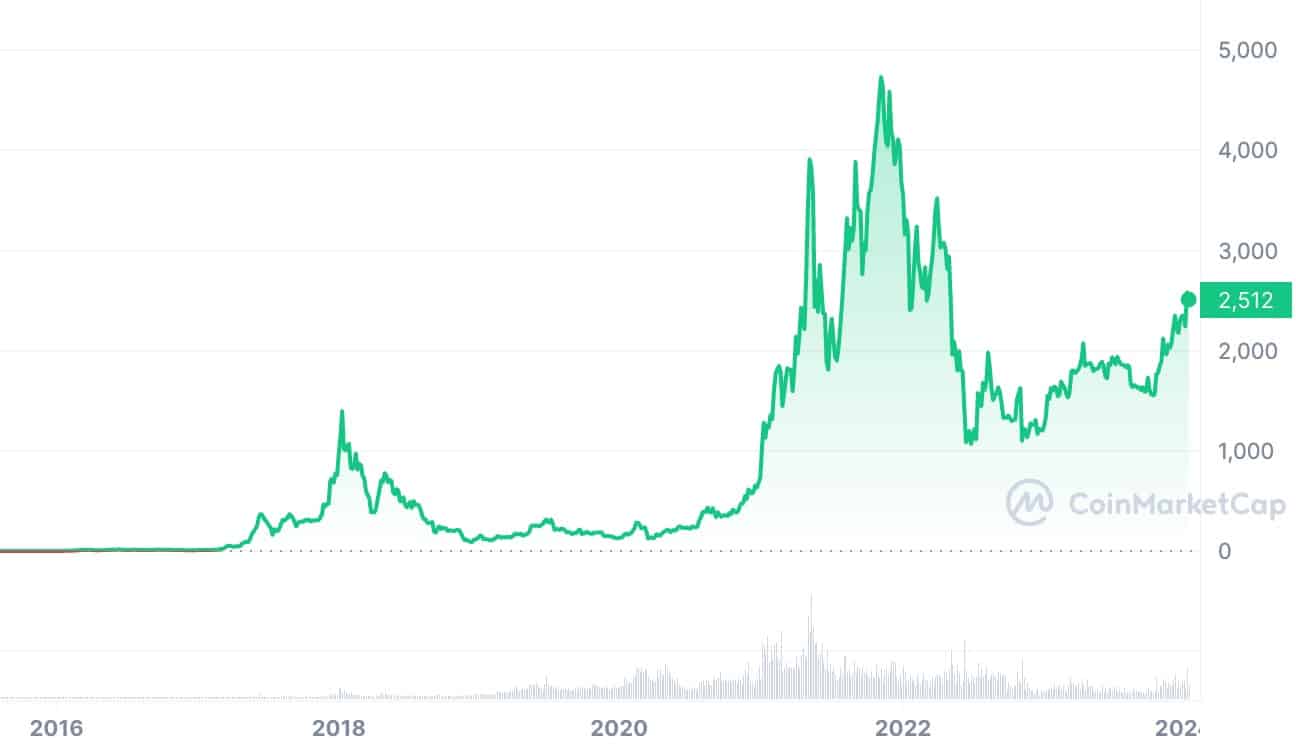 However, any further positive price movement was halted by the news of The DAO hack. ETH lost almost half its value over the next few months, trading as low as $7.2764.
However, any further positive price movement was halted by the news of The DAO hack. ETH lost almost half its value over the next few months, trading as low as $7.2764.
2017 was when a larger part of the world really heard about cryptocurrencies, as Bitcoin climbed from ~$900 at the beginning of the year to peak just below $20,000 in December 2017. Ethereum was one of the altcoins that faired best in this time, rising from an opening price of $8.10 on January 1st, to peak at $1,463.72 just over a year later, on January 13th, 2018—a meteoric gain of 17,970.6% that made it one of the fastest growing cryptocurrencies of the time and firmly placed it as the world’s most popular altcoin.
Like Bitcoin and all other cryptocurrencies, Ethereum’s price then plummeted, reaching lows around $80 in 2018, and finding critical support at $120. Ethereum then bumbled along slowly and didn’t see prices above $1,000 again until January 4th 2021, spending most of its time between 2018 and 2021 under $400.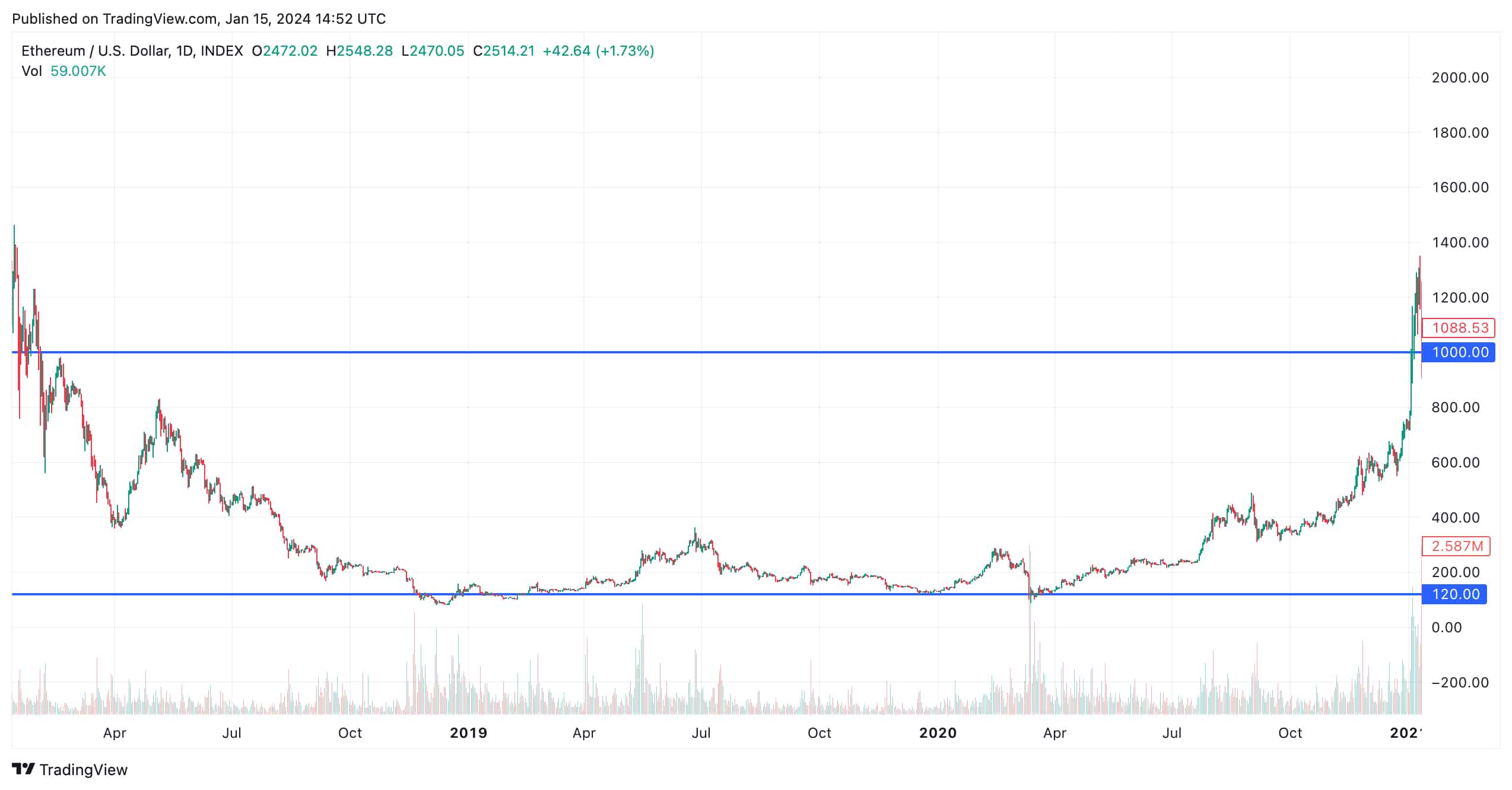 The last Bitcoin halving happened in May 2020 and is widely said to be responsible for the price action that started in the crypto markets in 2021, resulting in new ATHs for the majority of cryptocurrencies. Ethereum is included in that list, rallying 563% from an opening price of $737.60 at the start of 2021 to its current ATH of $4,891.70 on November 16th.
The last Bitcoin halving happened in May 2020 and is widely said to be responsible for the price action that started in the crypto markets in 2021, resulting in new ATHs for the majority of cryptocurrencies. Ethereum is included in that list, rallying 563% from an opening price of $737.60 at the start of 2021 to its current ATH of $4,891.70 on November 16th.
From here the price of Ethereum steadily declined along with the rest of the crypto market as the Crypto Winter of 2022 set in—all assisted by the collapse of Luna and the Terra (UST) in May—to hit local lows of $880 in June 2022, an 82% decrease, before quickly establishing support at $1,000 and $1,275.
Ethereum remained at these levels for a month, until the 13th of July when it bounced off a low of $1,005.61 to start a price rise in anticipation of The Merge event, now scheduled for September 2022 after numerous delays. This culminated in highs of just over $2,000 in August.
On September 6th, the Belatrix hardfork successfully upgraded the Beacon Chain causing ETH to 15% in anticipation of The Merge on September 15th with the Paris upgrade. However, by this date Ethereum had lost these gains and was trading in the same range as it was for the Belatrix hardfork on the day of The Merge—a day where, despite the success of Ethereum’s biggest ever upgrade, ETH lost 8.29% of its price.
Ethereum’s Performance Post-Merge
Ethereum’s poor start to life as a PoS blockchain continued, as further losses throughout the remainder of September and October saw it lose another 19.74% of its value and hit lows of $1,181.76. It then traded sideways before rallying to above $1,600 for the beginning of November 2022.
November 2022 saw the collapse of FTX and Alameda Research, which shook the crypto markets to its core, and caused huge sell-offs. Ethereum lost over 34% of its value before finding support at $1100.
From here Ethereum has recovered well, starting 2023 with a three week rally that saw it gain 40%, and retake the same price levels as before the collapse of FTX.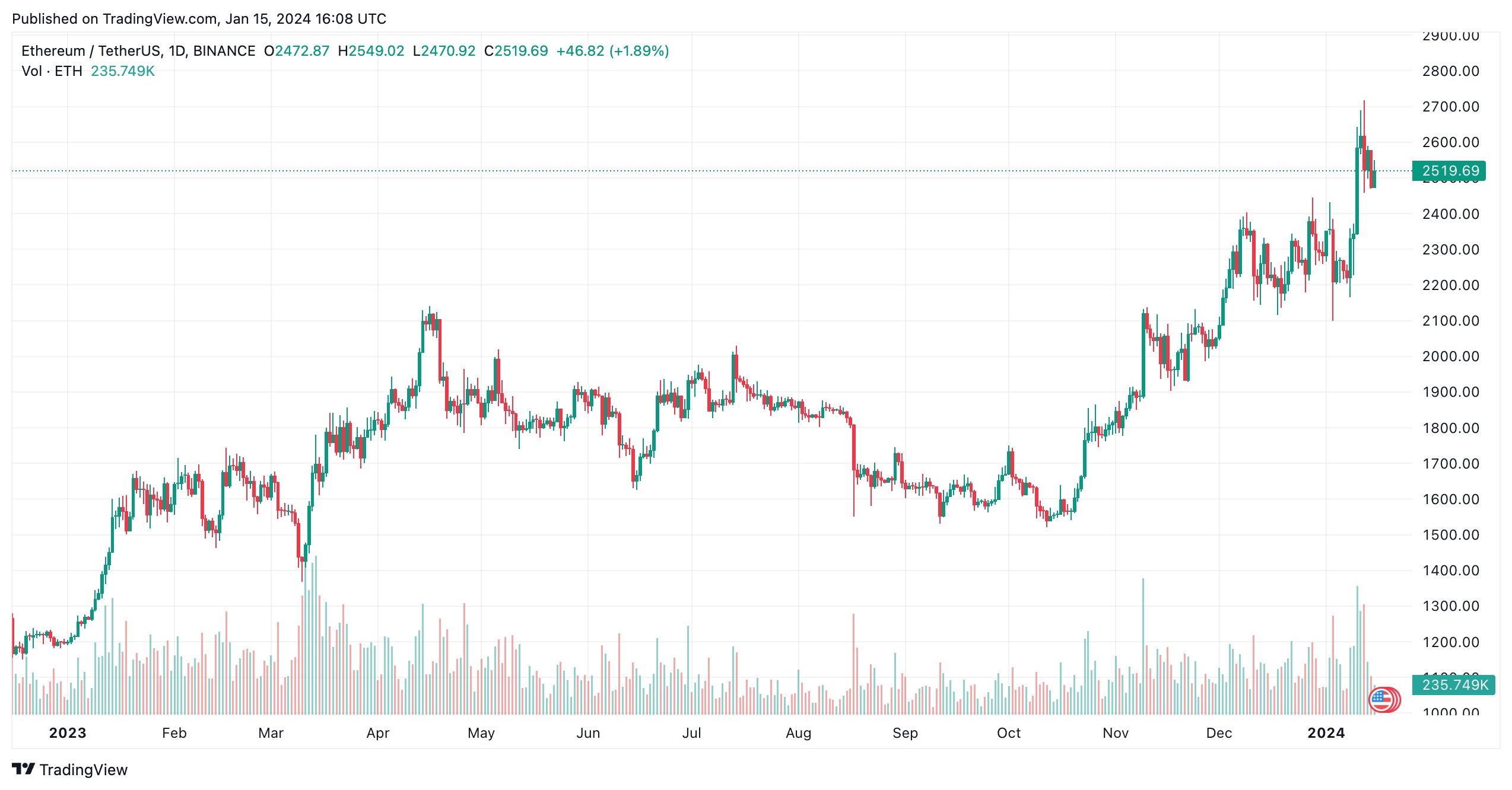 However, from here regulatory scrutiny, and vagueness, around the case of whether ETH is a security, by both the New York Attorney General, Gary Gensler, and the SEC, caused some wild individual day drops in the Ethereum price throughout 2023—some of over 15%.
However, from here regulatory scrutiny, and vagueness, around the case of whether ETH is a security, by both the New York Attorney General, Gary Gensler, and the SEC, caused some wild individual day drops in the Ethereum price throughout 2023—some of over 15%.
Despite all this regulator-induced FUD, the price of ETH continued to rise throughout the year—showing hugely positive sentiment from investors. ETH also ended 2023 on a high, thanks, in part, to gains driven by the expected approval of a Bitcoin ETF—closing 2023 at $2,282.89 with YoY gains of 91%.
2024 has since been positive, and the approval of 11 Bitcoin ETFs in January 2024 saw ETH pump 9% (while Bitcoin remained stable) on expectations that it might be the next cryptocurrency to have an ETF approved.






![[ℕ𝕖𝕧𝕖𝕣] 𝕊𝕖𝕝𝕝 𝕐𝕠𝕦𝕣 𝔹𝕚𝕥𝕔𝕠𝕚𝕟 - I Think I Have Crypto PTSD](https://cdn.bulbapp.io/frontend/images/819e7cdb-b6d8-4508-8a8d-7f1106719ecd/1)


































